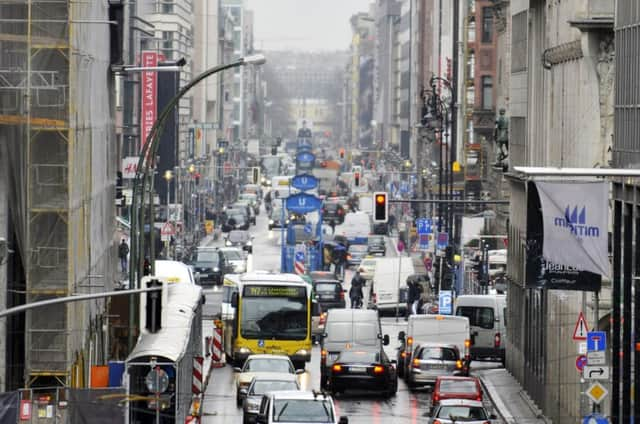Comment: Island taxi sharing is picking up speed


The sharing economy is generating a great deal of interest among policy-makers and commentators.
Prominent in this emerging movement are large progressive municipalities such as Berlin and San Francisco.
Advertisement
Hide AdAdvertisement
Hide AdSharing is also receiving attention amongst transport policy-makers. Progressive municipalities across Europe are increasingly looking at car sharing, lift sharing, car clubs and bike sharing as a way of reducing the numbers of vehicles, congestion and emissions in cities and of providing more flexible multi-modal public transport options.
Proponents of car and lift sharing are often quite evangelical about such initiatives, believing that they are zeitgeist surfing, early adopters of something genuinely innovative and ground-breaking.
They are mistaken. After 20 years researching transport in rural, remote and island communities, a question I often ask is: “What is the most common mode of transport for non-car owners in rural and island communities?” Answer: the car. Or more accurately, someone else’s car.
Rather than a recent invention of large progressive municipalities, shared mobility or getting a lift from family and family has been a cornerstone of rural and island journey-making for generations.
It is possible to make the case that the sharing is part of our rural and island DNA.
However, the more prosaic reason for prominence of lift giving in rural areas the combination of economics and geography. It would simply cost too much to provide public transport services that meet everyone’s needs. In a densely populated valley served by one road and a large town at the bottom, subsidy levels might be close to zero for each passenger carried. Elsewhere, it costs councils money to provide rural transport services.
In some geographical localities – such as small, very isolated communities or in agricultural landscapes with very dispersed settlement patterns, that subsidy can be more than £50 per passenger journey. Demand-responsive services, while incredibly popular with passengers, don’t change the economics.
The most expensive part of a bus service is the driver. If a vehicle is carrying nothing but fresh air for much of the day, it is not sustainable. For councils to justify subsidies, transport services need to be carrying passengers.
Advertisement
Hide AdAdvertisement
Hide AdThe trick for local authorities is to find new models for more effectively meeting the needs of rural and island communities that offer better value for money.
Step forward the community run Glenelg and Arnisdale shared taxi scheme. The scheme was the brainchild of Sam MacNaughton, the recently retired director of transport of infrastructure at Highland Council. Sam wanted to find a low-cost alternative to a bus service connecting Glenelg and Arnisdale with the City Link services at Shiel Bridge, which had to be withdrawn because of unsustainable passenger subsidy levels. Sam invited Robert Gordon University (RGU) to liaise with the community with the aim of identifying a viable model and the chosen scheme has been running for a year.
The basis of the scheme is shared community ownership. Highland Council provides the community with £3,000 a year to support the scheme. The community negotiated a call-off contract with a local taxi scheme to provide a service at a fixed cost per trip (taxi schemes are common in rural and island areas but “trip only” call-off contracts are not). The community – through a constituted Bus Users Group (BUG) – manage the contract and manage their pot of money, and once the £3,000 is used up then the community can either stop providing the service for the rest of the year or engage in additional fundraising.
To make the grant go as far as possible, the tariff structure incentivises the community to maximise passenger numbers on any given trip. Every passenger is charged the same flat fare. If one or two passengers share a taxi, then the BUG has to make up the difference from its £3,000. If three people share a taxi then the community break even on a trip. Four or more and the community are up on the deal and increase the money in their pot. While the bus users group have a website, the service is resolutely low-tech. Passengers simply buy tickets in the local shop. For Highland Council, the scheme is risk free and requires a relatively a small investment
Has the scheme been successful? Unequivocally so. In its first year, the scheme has tripled passenger numbers compared to the withdrawn bus service, with per passenger subsidy costs that are around 20 per cent of what they were. Support per passenger carried is 80 per cent lower under the new scheme. Not surprisingly, the community has plans to expand the service.
Perhaps Sam MacNaughton, The Glenelg and Arnisdale BUG and their supporters in Highland Council and The Highlands and Islands Transport Partnership (Hitrans) can teach Berlin and San Francisco a thing or two about the sharing economy.
• David Gray is director of the Research Institute for Management Governance and Society (IMaGeS) and Professor of Transport Policy at Robert Gordon University, www.rgu.ac.uk
SEE ALSO